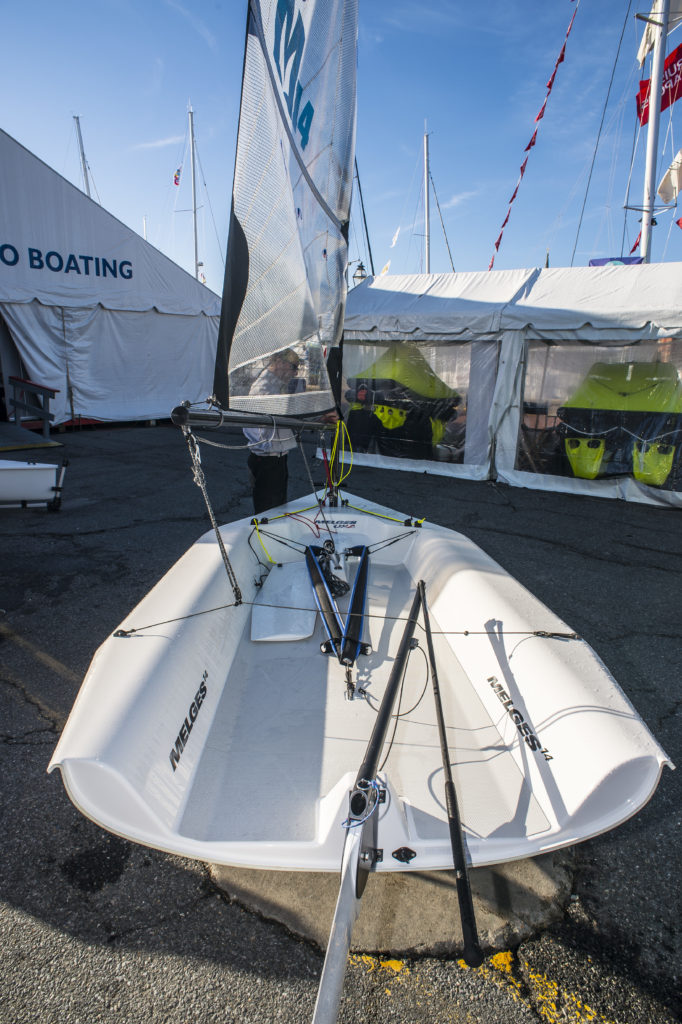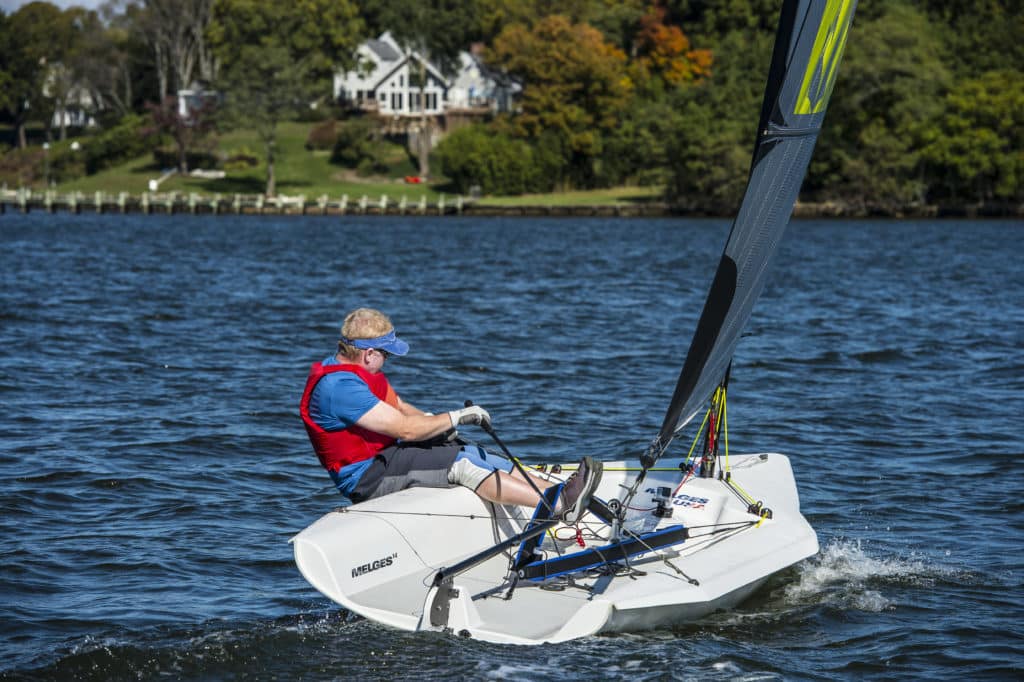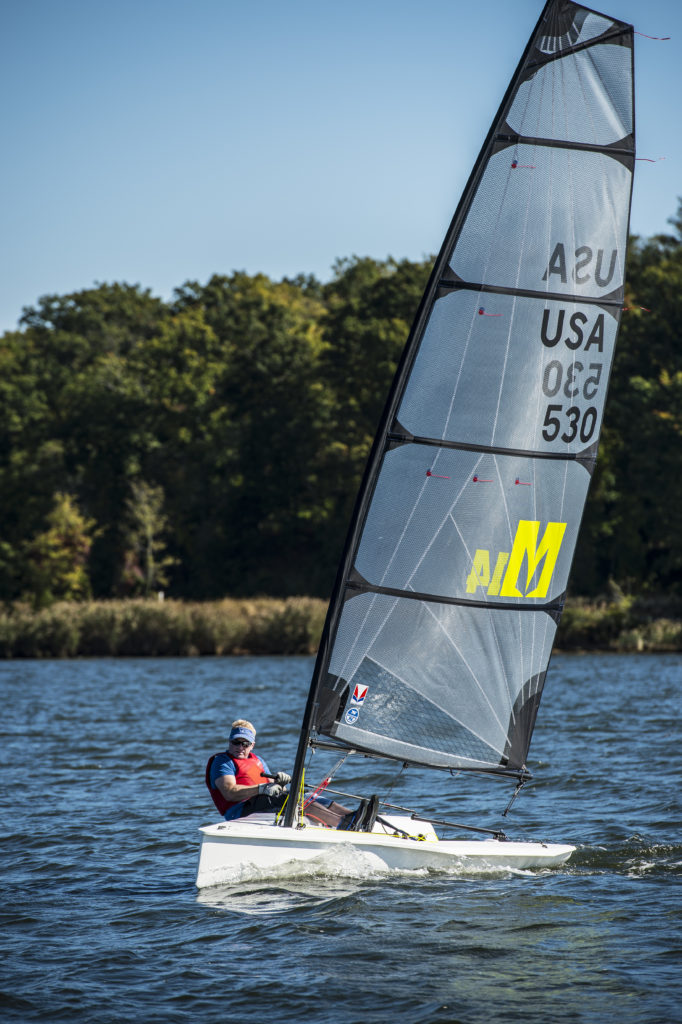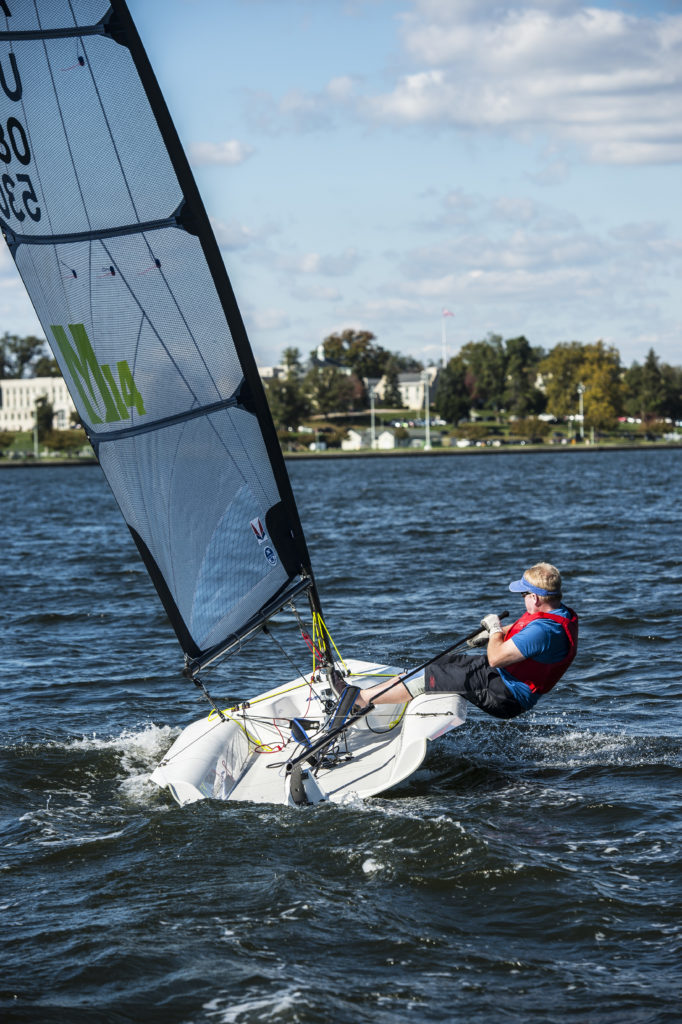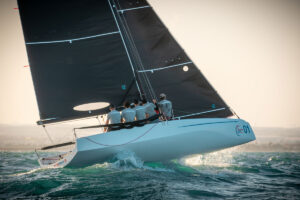Best Dinghy: Melges 14
Any discussion of a modern singlehander will inevitably lead to a comparison with the Laser, which is the ultimate in performance and simplicity, the most prolific one-design dinghy of all time. It’s the benchmark. The Laser, however, is creeping toward 50 years, and not much about it has changed.
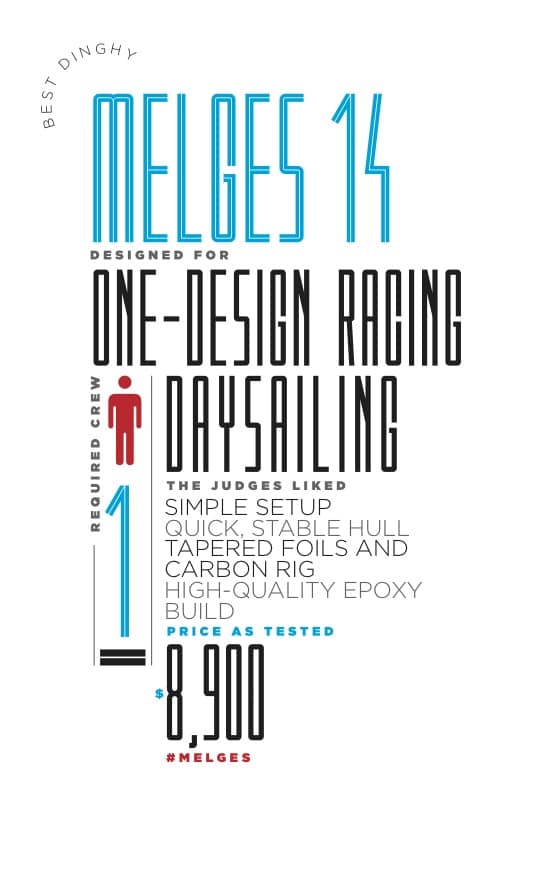
Sailors can and will evolve. It’s OK to embrace a more modern singlehander, one that delivers the same simplicity and performance — and then some. The Melges 14, the judges agreed, is a righteous challenger to the Laser’s kingdom. It was recognized as the best dinghy in 2016, and it’s a boat that will make you want to drop everything, rig up and go sailing when the breeze is on. Given Melges’ success rate with and the support of its other one-design classes, big-fleet championships are only a matter of time.
The Reichel/Pugh-designed 14-footer has been tinkered with over two years of stealthy development. Melges’ Andy Burdick said they now have everything “right,” and production started in summer 2015. The 14 is priced at $8,900, which is in line with a top-end Laser setup.
The boat preserves the distinctive Melges look: square knuckle, flat and narrow entry, wide side decks, and a lot of volume aft for controlled planing. “Our focus was on making it feel good upwind,” said Burdick, “to be easy and user-friendly.” To that end, they nailed it.
Two sail-size options accommodate a wide range of sailors and ages. Whether you’re searching for the best sailing dinghy for beginners, or the best sailing dinghy for adults, you’ll be happy with your purchase.
The 98-square-foot Mylar sail sleeves onto a two-piece tapered carbon mast, with a shorter top section used for the smaller, 85-square-foot midrange sail. Addressing the known shortcoming of the Laser’s mast step, Melges engineered the 14’s mast tube so it’s tied into a structural brace inside the hull, which distributes loads to prevent step failure.
Sail controls include cunningham, outhaul and vang only, with the vang tail extending straight from the vang cleat, and the outhaul and cunningham controls split outboard to cam cleats. The leads are proper and the hardware specced perfectly.
“The functionality is awesome with everything,” said Allen after sailing the boat in a gusty 10-knot breeze and flat water. “It could use mainsheet cam cleats on the side decks, but that’s an easy addition for anyone who wants them. In breeze, with it vang-sheeted, you could easily trim straight off the boom, skiff-style.”
Upwind, said Allen, the boat felt “tight and responsive” to kinetics, and he found weight placement and heel angle were key to having the boat sail on its chine. “In flat water I could put the knuckle just barely in to get the transom out, and it had a great groove,” he said.
Stewart agreed, adding that the bow was solid through powerboat wakes, and that it pointed well, with narrow tacking angles.
“The mainsail and mast pairing were all sorted out well. You could tell they’ve thought this through,” said Stewart. “The rudder was all real positive. Everything about the boat is just nice and rigid. There’s nothing loose about any of it. When I turned downwind, it took off and was easy to balance.”
At 120 pounds, the boat was light for its size, with an infused-epoxy and PVC-cored build, but a buyer would be wise to have a dolly-trailer combination rather than car-topping. A few notable differences from the Laser, the judges pointed out, included full battens in the main, which give great shape in breeze but may not be ideal in super-light conditions, as they push into the luff and force the sleeve to rotate around the mast, creating a pucker at the luff.
The biggest difference they noted, and perhaps the boat’s greatest selling point, is the roominess of the cockpit. There’s plenty of room for two people, so when having all the fun to yourself gets old, you can grab a friend and share the stoke.
For more on the Melges 14 and demo availability, visit Melges Sailboats
